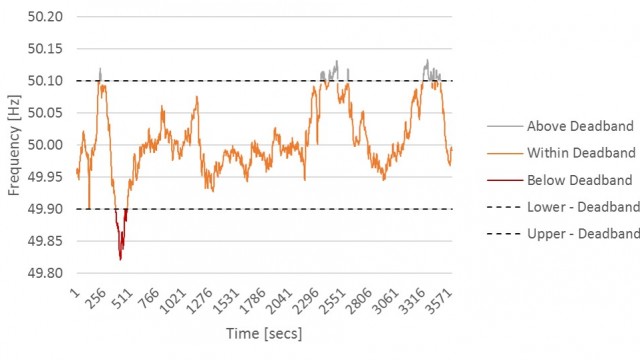Energy storage value-stacking is seductive, but brings one big risk
Published June 2016
Combining revenue streams for energy storage is theoretically neat. Implementation in real life can prove tough. Fliss Jones highlights one big commercial pitfall – and what to do about it.
Value-stacking. Isn’t it seductive?
You pick a few revenue streams for energy storage, do some price forecasting, and add it all up. The result is an irresistible chart looking something like this, with a dazzlingly tall “Total revenue” bar.

Value-stacking’s beauty is twofold:
- It boosts profitability, combining multiple sources to maximise returns.
- It brings resilience, avoiding dependence on a single source of income to provide partial protection against the risk of regulatory/market changes.
Attractive, huh? Well yes – but prepare for the cold hard slap of commercial realism.
Beware the charm
Whilst combining revenue streams is theoretically neat – and an economic necessity – the first flush of love soon wears off.
Value-stacking introduces what we at Everoze call “revenue interface risk”, i.e. a series of technical and commercial challenges that result from accessing multiple revenue streams.
I’ll be upfront: we’re concerned that industry is placing too much emphasis on thetotal revenue stacked, at the expense of the interfaces in how those revenue streams are stacked. To return to our chart, we think there needs to be less attention put on the total height of the value-stacked bar (orange arrow), and more on how the different value sources are stacked together (blue arrows).

The impact of this revenue interface risk can be heartbreak: your storage project might be left unable to deliver the services targeted, and so fail to secure the promised revenues. Relationship pressures can stem from various issues, including:
- Technical requirements: This is about the ability of your storage project to meet the requirement of delivering multiple services, given differences in technical service specifications. For instance, the UK’s enhanced frequency response service requires symmetrical operation (ie both upwards and downwards support), whereas other services are one-way, bringing complexity in managing state of charge.
- Commercial prioritisation: This is about your ability to meet commercial obligations. When do you target Revenue 1, and when do you target Revenue 2? The answer can be contractually complex: some ancillary services bring heavy penalties for non-performance, and/or place compliance restrictions on value-stacking; the counterparties may differ too.
- Temporal alignment: This is about mismatches in tendering timelines, and in the contract lengths of different revenue streams. As a result, the revenue streams accessed will likely change over the project’s lifetime. For instance, enhanced frequency response contracts expire after 4 years, meaning that a project’s value stack might look quite different from year 5 onwards.
3 ways to manage the risk
So here’s the challenge: you need some value-stacking romance to hit your hurdle rate, but you also need to manage the risks.
Well no-one said love was easy. But here’s our Everoze Agony Aunt advice:
- Recognise the complexity! View neat value-stacking graphs with a dose of healthy scepticism, acknowledging the techno-commercial risks upfront, and the likelihood that the revenue stack will change over time.
- Start with just 2-3 revenue streams: For early projects, consider targeting 2-3 high value revenue streams only at first, to reduce complexity. Accept that this approach will reduce the total possible revenue, but will maximise the likelihood of that revenue being attained.
- Conduct robust due diligence: Embark on a thorough technical and commercial due diligence process, ensuring that all risks are clearly identified, allocated and reflected in the financial model. We’d be pleased to help you here.
As always, any questions or comments – just get in touch!






